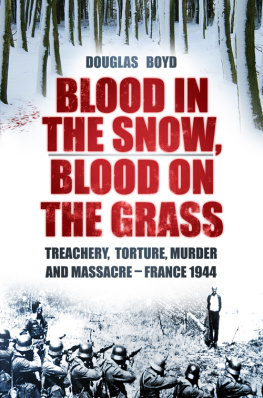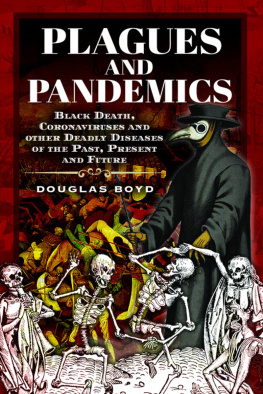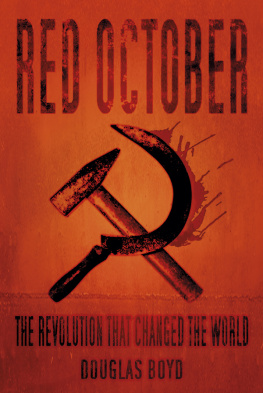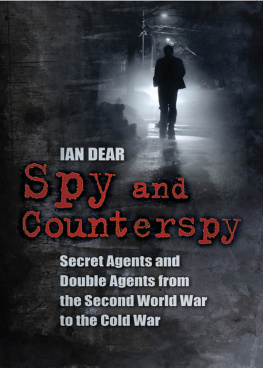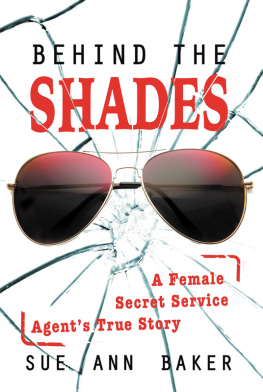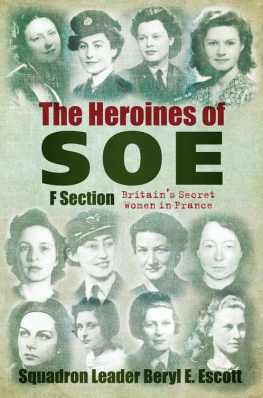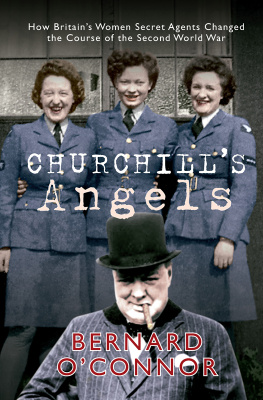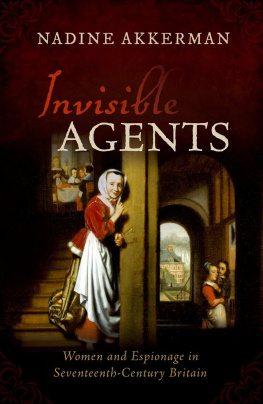AGENTE
ALSO BY DOUGLAS BOYD
Histories:
April Queen, Eleanor of Aquitaine
Voices from the Dark Years
The French Foreign Legion
The Kremlin Conspiracy: 1,000 Years of Russian Expansionism
Normandy in the Time of Darkness: Life and Death in the Channel Ports 194045
Blood in the Snow, Blood on the Grass: Treachery and Massacre, France 1944
De Gaulle: The Man who Defied Six US Presidents
Lionheart: The True Story of Englands Crusader King
The Other First World War: The Blood-Soaked Russian Fronts 191422
Daughters of the KGB: Moscows Cold War Spies, Sleepers and Assassins
Novels:
The Eagle and the Snake
The Honour and the Glory
The Truth and the Lies
The Virgin and the Fool
The Fiddler and the Ferret
The Spirit and the Flesh
DOUGLAS BOYD
AGENTE
FEMALE SECRET AGENTS IN
WORLD WARS, COLD WARS
AND CIVIL WARS

First published in 2016
The History Press
The Mill, Brimscombe Port
Stroud, Gloucestershire, GL5 2QG
www.thehistorypress.co.uk
This ebook edition first published in 2016
All rights reserved
Douglas Boyd, 2016
The right of Douglas Boyd to be identified as the Author of this work has been asserted in accordance with the Copyright, Designs and Patents Act 1988.
This ebook is copyright material and must not be copied, reproduced, transferred, distributed, leased, licensed or publicly performed or used in any way except as specifically permitted in writing by the publishers, as allowed under the terms and conditions under which it was purchased or as strictly permitted by applicable copyright law. Any unauthorised distribution or use of this text may be a direct infringement of the authors and publishers rights, and those responsible may be liable in law accordingly.
EPUB 978 0 7509 6953 6
Original typesetting by The History Press
eBook converted by Geethik Technologies
CONTENTS
INTRODUCTION
What makes a woman volunteer to become a secret agent, knowing that, if caught by the enemy, she risks sexual violence in addition to the injuries, imprisonment and tortures that may be inflicted on male comrades? If she is a mother, she also may be putting her children at horrific risk. Yet some women are courageous enough to do that. Espionage has been described as the second oldest profession and the anger of the men they outwitted has often had these courageous women labelled whores. It is an age-old sexist slur, sadly given modern currency by misogynist Islamic fundamentalists, but some were indeed whores. Three-and-a-half millennia before Mata Hari, the history of women agents goes back to the Old Testament Book of Joshua, which records how Rahab, a harlot of Jericho that most ancient of cities risked her life to hide two Hebrew spies during Joshuas conquest of Canaan c. 1400 BCE.
If female agents have generally received less acclaim than their male counterparts, this is because spying is widely and wrongly treated in fact and fiction as a boys game. Even if those agents were also ladies of the night and used their feminine wiles and sexual favours to obtain information, or escape capture, is that wrong? If a woman beds several men in the course of her clandestine life, is that somehow reprehensible when a James Bond in fiction or a Sidney Riley in fact treated women as tools of the trade or toys for their pleasure, and are heroes?
This book is not just about women who spied and their motivations for doing so. It also looks at other clandestine work that is better done by women, partly because of their personal qualities and partly because, even today, her male enemies are still less suspicious of a woman apparently going about her daily business than of a man in the same place at the same time. A friend of the author who was a teenage girl during the German occupation of France recounted how, when transporting incriminating material in the basket of her bicycle, she talked her way through several checkpoints by flirting with the sentries checking her papers, to distract them. Polish countess Krystyna Skarbek, alias Special Operations Executive (SOE) agent Christine Granville, outwitted Germans troops hunting her in the Alps during 1944 by dressing as, and pretending to be, a simple Italian peasant girl. She also had the nerve to reveal her true identity to a Gestapo officer when bluffing him into releasing her boss and lover Francis Cammaerts, just hours before he was to be shot during the USFrench invasion of southern France in August 1944.
Much has been written about the women agents of SOE. Yet, in a debate in the House of Lords on 6 June 2011, Baroness Crawley of Edgbaston urged the government to make a gesture commemorating all the women sent into France by SOE. Her speech included the following:
Apparently, they had each been told when recruited that there was only a 50 per cent chance of personal survival. Yet, to their eternal credit, off they went. Some were already mothers; some just out of their teens. In France, they often had to travel hundreds of miles by bike and train, protected only by forged papers and, as they went about their frequently exhausting work they were under constant danger of arrest by the Gestapo. Some were even exposed to betrayal by double agents and turncoats. The story of what happened to those women is often unreadable and, in twenty-first century Britain, is perhaps too easily under-remembered.
One hundred years before the Second World War, during the American Civil War, 17-year-old Belle Boyd (no known relation of the author) and Rose Greenhow flirted with Union officers and reported their plans to Confederate general Stonewall Jackson after a fast ride on horseback through the battle lines. Known as la belle rebelle, Boyd was arrested six times before escaping to Britain. In the same conflict, Quaker-educated anti-slavery activist Elizabeth van Lew spied for the Union.
During the Algerian war of independence French communists known as les porteurs de valises literally carried suitcases full of money across the Mediterranean to finance the Arme de Libration Nationale fighting the French armed forces. When several of these couriers were caught, tortured and killed by their compatriots in uniform fighting a dirty war with the ALN, female comrades volunteered to replace them, thinking they were less likely to be detected. They too were tortured and killed. After suffering multiple rapes, their bodies were dropped from helicopters into the sea.
Hiding wounded combatants from those who would kill them, running an underground railway to help Allied soldiers or black slaves to freedom, or caring for children whose parents have been arrested by an occupying army are just a few of the clandestine acts better done by women. Communist Litzi Kohlman married Kim Philby to save her life in strife-torn Vienna, but went on with Austrian-born photographer Edith Taylor-Hart to talent spot British traitors for Stalin. Berlin-born GRU colonel Ursula Kuczynski was ordered by Moscow to divorce her Soviet husband and marry British communist Len Beurton as cover. She later said that the nappies on her washing line and a pram in the garden threw MI5 officers completely off her scent during the period when she was transmitting thousands of messages to Moscow from Soviet agents in the UK, including Tube Alloys atomic bomb project spy Klaus Fuchs, recruited by her brother. Also spying at Tube Alloys was Lithuanian-born Melita Norwood dubbed the Red Granny when blown by renegade KGB archivist Vasili Mitrokhin in 1989. CroatianAmerican Frieda Truhar spent the 1930s travelling the world as a Communist International (Comintern) courier, carrying huge sums of Moscows cash stitched into her corselette. She risked arrest by the British police in Shanghai hunting communist agents, but her most pressing problem was an American male comrade who thought her body was common property.
Next page


